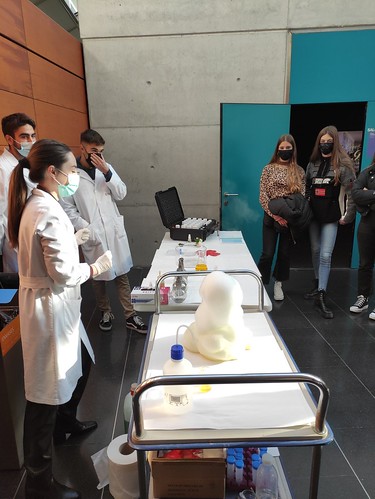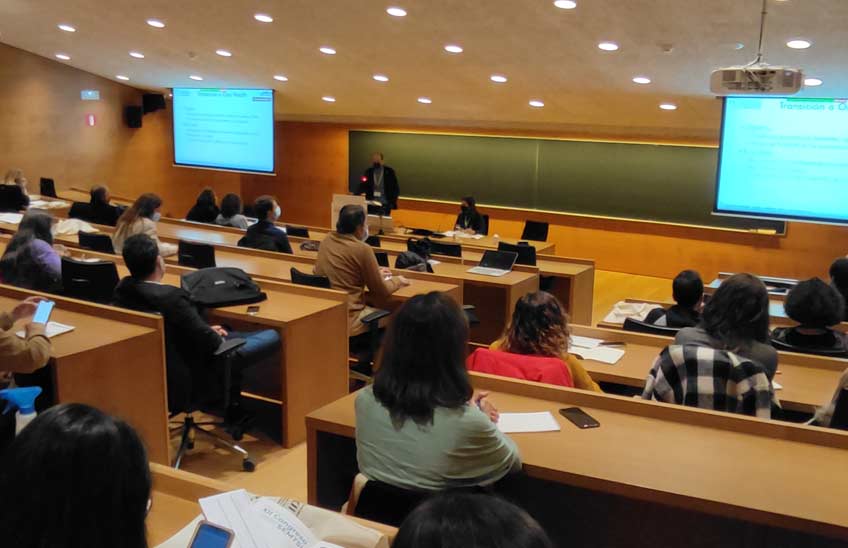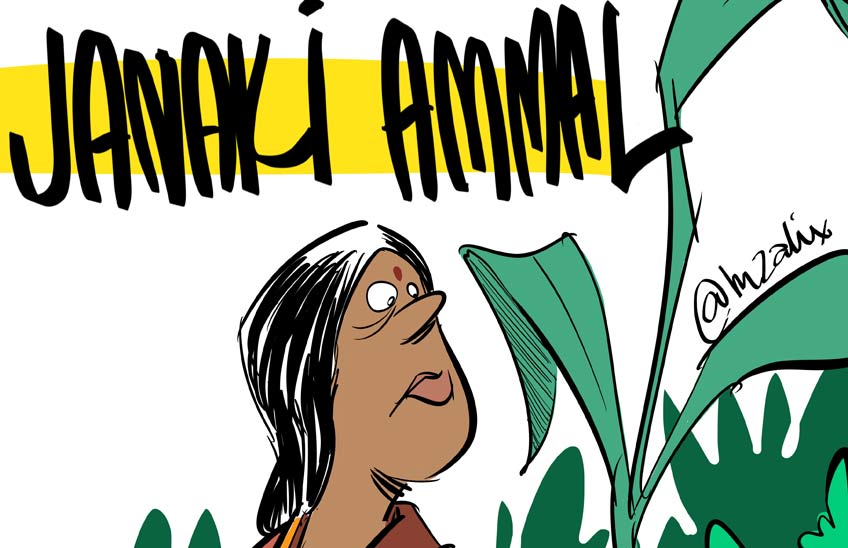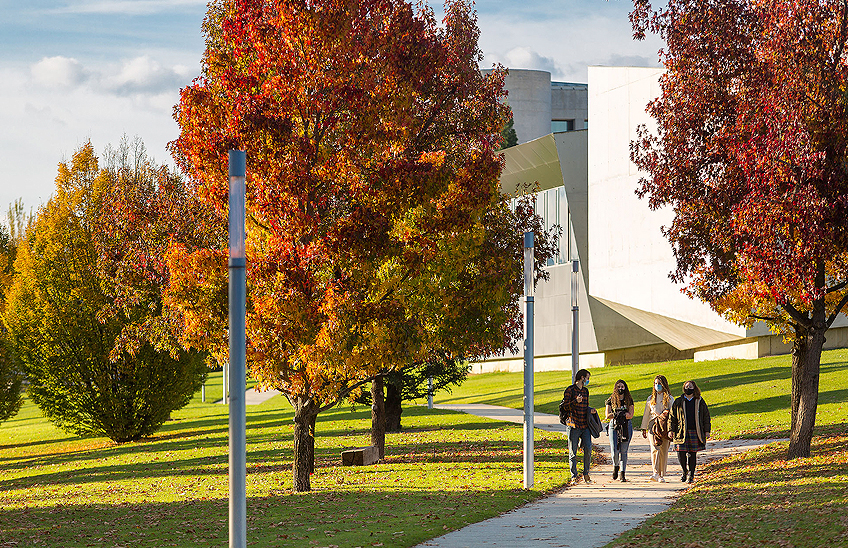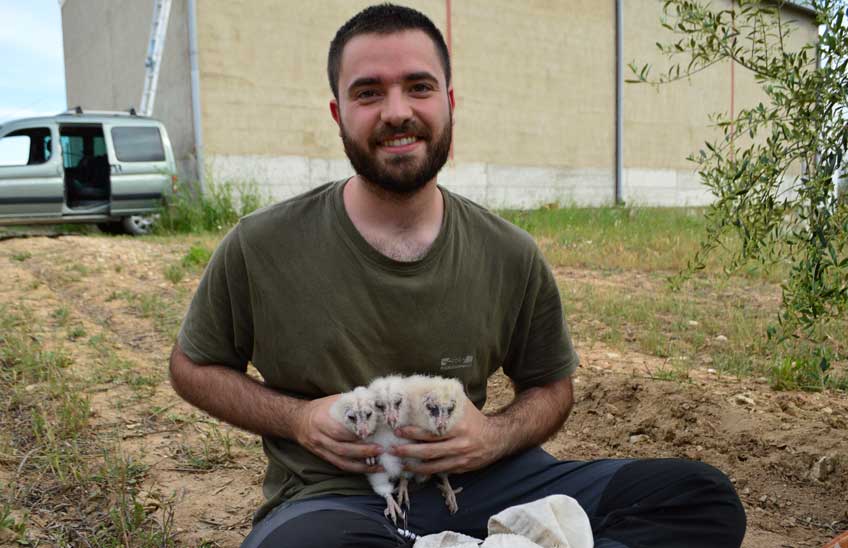750 schoolchildren from Navarre take part in the activities organised by the Science Museum of the University of Navarre during Science Week
Conferences, experimental workshops and the screening of scientific documentaries are some of the activities in which this group has participated.
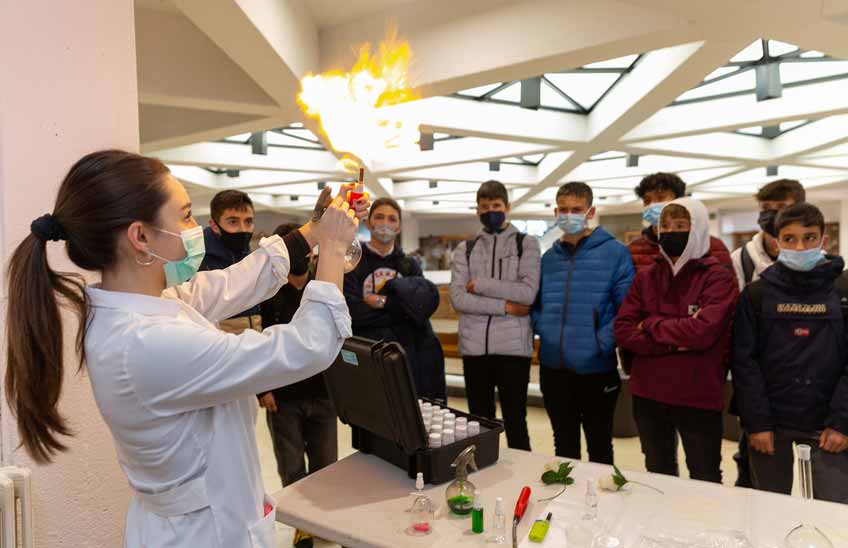
19 | 11 | 2021
The Science Museum of the University of Navarra closes the Science Week with more than 750 schoolchildren taking part in its activities atattendance . The participating students -from 3rd of ESO to 1st of ESO- have been able to enjoy lectures, experimental workshops, high school diploma- have been able to enjoy conferences, experimental workshops, exhibition, and viewing of scientific documentaries, an exclusive school program adapted to their level of knowledge.
"The new generations are a group that we have to train in the scientific field so that in the future they will be able to make appropriate decisions to meet the challenges that we will face as a society. Our goal in these activities is that they learn about science, its relevance and, as far as possible, that they become passionate aboutit", says Ignacio López-Goñi, director of the Science Museum of the University of Navarra.
In total, 750 schoolchildren have participated in the activities organized by the scientific institution, from ten schools and associations of the region: IES Julio Caro Baroja, Escolapios Calasanz, San Cernin, Liceo Monjardín, IES Basoko, IES Ibaialde, IES Sangüesa, Luis Amigó, Fundación Ilundain and the association Navarra de Altas Capacidades (ANAC).
The participants have watched the film "My Love Affair with the Brain: The Life and Science of Dr. Marian Diamond", finalist film of the I edition of #LabMeCrazy! Science Film Festival. In addition, they have enjoyed the different workshops and learned some complementary concepts to the subject matter they see in their centers: biology - methods of capture and study of animals-, geology - fundamentals and properties of minerals-, microbiology - staining and viewing of oral microbiota, and usefulness of antibiotics-, Chemistry -emission of energy, pH, catalysts, exo/endothermic reactions, polymers-, and physics - transmission of waves by different media, their properties and utilities-.
The students have had informative sessions on science, given by professors and researchers of the School of Sciences: "Chemistry extraterrestrial", "The threat of superbacteria", "The minerals of the Roman house", "Shall I print you a heart?: biotechnology, biomaterials and stem cells as regenerative medicine", "A picture is worth more than a thousand words. Ophthalmology workshop. Take care of your eyes today to see tomorrow", and "ROBOTS. What can we expect from them in the future?".
"Science in the street", a different way to bring science closer to the public
One of the star activities of this Science Week has been "Science in the street", a proposal of knowledge dissemination in which, through infographics displayed on bus shelters and totem poles in Pamplona, the Science Museum has explained to the public the science behind a fruit, a beer, a cell phone, a car and a loaf of bread.
On the other hand, the Science Museum has organized a lecture series "The COP26 Climate Summit: a new hope?" in which experts in different disciplines -Economics, energy, Building, biodiversity, livestock or invasive species - have addressed the topic Climate Change from a approach multidisciplinary .
An educational workshop on the impact of invasive alien species, 3D glasses to know how a science museum of the future looks like, the screening of some finalist films of #LabMeCrazy! Science Film Festival, and some workshops on Chemistry and nature in Sarriguren, would complete the set of activities offered by this scientific institution for all audiences.
The Science Weeks in Navarra is an event co-organized by the University of Navarra, the Pamplona Planetarium, the Public University of Navarra and the Friends of Science Club. development The Science Museum of the University of Navarra has the support of the Spanish Foundation for Science and Technology (FECYT) / Ministry of Science and Innovation, as well as other institutions such as the Government of Navarra, Pamplona City Council, Cima University of Navarra, Banco Sabadell Foundation, Life Invasaqua, Acunsa, Laboral Kutxa, Valle de Egüés City Council, and the Biodiversity and Environment Institute of the University of Navarra.

